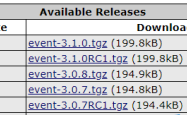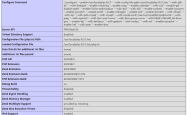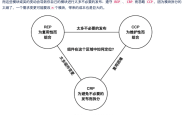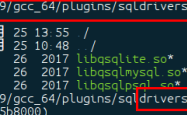laravel源码分析队列Queue方法示例
前言
队列 (Queue) 是 laravel 中比较常用的一个功能,队列的目的是将耗时的任务延时处理,比如发送邮件,从而大幅度缩短 Web 请求和响应的时间。本文我们就来分析下队列创建和执行的源码。
队列任务的创建
先通过命令创建一个 Job 类,成功之后会创建如下文件 laravel-src/laravel/app/Jobs/DemoJob.php。
?| 1 2 3 | > php artisan make :job DemoJob > Job created successfully. |
下面我们来分析一下 Job 类的具体生成过程。
执行 php artisan make:job DemoJob 后,会触发调用如下方法。
?laravel-src/laravel/vendor/laravel/framework/src/Illuminate/Foundation/Providers/ArtisanServiceProvider.php
| 1 2 3 4 5 6 7 8 9 10 11 | /** * Register the command. * [A] make:job 时触发的方法 * @return void */ protected function registerJobMakeCommand() { $this ->app->singleton( 'command.job.make' , function ( $app ) { return new JobMakeCommand( $app [ 'files' ]); }); } |
接着我们来看下 JobMakeCommand 这个类,这个类里面没有过多的处理逻辑,处理方法在其父类中。
?| 1 | class JobMakeCommand extends GeneratorCommand |
我们直接看父类中的处理方法,GeneratorCommand->handle(),以下是该方法中的主要方法。
?| 1 2 3 4 5 6 7 8 9 10 11 12 13 | public function handle() { // 获取类名 $name = $this ->qualifyClass( $this ->getNameInput()); // 获取文件路径 $path = $this ->getPath( $name ); // 创建目录和文件 $this ->makeDirectory( $path ); // buildClass() 通过模板获取新类文件的内容 $this ->files->put( $path , $this ->buildClass( $name )); // $this->type 在子类中定义好了,例如 JobMakeCommand 中 type = 'Job' $this ->info( $this ->type. ' created successfully.' ); } |
方法就是通过目录和文件,创建对应的类文件,至于新文件的内容,都是基于已经设置好的模板来创建的,具体的内容在 buildClass($name) 方法中。
?| 1 2 3 4 5 6 7 | protected function buildClass( $name ) { // 得到类文件模板,getStub() 在子类中有实现,具体看 JobMakeCommand $stub = $this ->files->get( $this ->getStub()); // 用实际的name来替换模板中的内容,都是关键词替换 return $this ->replaceNamespace( $stub , $name )->replaceClass( $stub , $name ); } |
获取模板文件
?| 1 2 3 4 5 6 | protected function getStub() { return $this ->option( 'sync' ) ? __DIR__. '/stubs/job.stub' : __DIR__. '/stubs/job-queued.stub' ; } |
job.stub
?| 1 2 3 4 5 6 7 8 9 10 11 12 13 14 15 16 17 18 19 20 21 22 23 24 25 26 27 28 29 30 31 32 33 | <?php /** * job 类的生成模板 */ namespace DummyNamespace; use Illuminate\Bus\Queueable; use Illuminate\Foundation\Bus\Dispatchable; class DummyClass { use Dispatchable, Queueable; /** * Create a new job instance. * * @return void */ public function __construct() { // } /** * Execute the job. * * @return void */ public function handle() { // } } |
job-queued.stub
?| 1 2 3 4 5 6 7 8 9 10 11 12 13 14 15 16 17 18 19 20 21 22 23 24 25 26 27 28 29 30 31 32 33 34 35 36 | <?php /** * job 类的生成模板 */ namespace DummyNamespace; use Illuminate\Bus\Queueable; use Illuminate\Queue\SerializesModels; use Illuminate\Queue\InteractsWithQueue; use Illuminate\Contracts\Queue\ShouldQueue; use Illuminate\Foundation\Bus\Dispatchable; class DummyClass implements ShouldQueue { use Dispatchable, InteractsWithQueue, Queueable, SerializesModels; /** * Create a new job instance. * * @return void */ public function __construct() { // } /** * Execute the job. * * @return void */ public function handle() { // } } |
下面看一下前面我们创建的一个Job类,DemoJob.php,就是来源于模板 job-queued.stub。
?| 1 2 3 4 5 6 7 8 9 10 11 12 13 14 15 16 17 18 19 20 21 22 23 24 25 26 27 28 29 30 31 32 33 34 | <?php /** * job 类的生成模板 */ namespace App\Jobs; use Illuminate\Bus\Queueable; use Illuminate\Queue\SerializesModels; use Illuminate\Queue\InteractsWithQueue; use Illuminate\Contracts\Queue\ShouldQueue; use Illuminate\Foundation\Bus\Dispatchable; class DemoJob implements ShouldQueue { use Dispatchable, InteractsWithQueue, Queueable, SerializesModels; /** * Create a new job instance. * * @return void */ public function __construct() { // } /** * Execute the job. * * @return void */ public function handle() { // } } |
至此,我们已经大致明白了队列任务类是如何创建的了。下面我们来分析下其是如何生效运行的。
队列任务的分发
任务类创建后,我们就可以在需要的地方进行任务的分发,常见的方法如下:
?| 1 2 | DemoJob::dispatch(); // 任务分发 DemoJob::dispatchNow(); // 同步调度,队列任务不会排队,并立即在当前进程中进行 |
下面先以 dispatch() 为例分析下分发过程。
?| 1 2 3 4 5 6 7 | trait Dispatchable { public static function dispatch() { return new PendingDispatch( new static (...func_get_args())); } } |
| 1 2 3 4 5 6 7 8 9 10 11 12 13 | class PendingDispatch { protected $job ; public function __construct( $job ) { echo '[Max] ' . 'PendingDispatch ' . '__construct' . PHP_EOL; $this ->job = $job ; } public function __destruct() { echo '[Max] ' . 'PendingDispatch ' . '__destruct' . PHP_EOL; app(Dispatcher:: class )->dispatch( $this ->job); } } |
重点是 app(Dispatcher::class)->dispatch($this->job) 这部分。
我们先来分析下前部分 app(Dispatcher::class),它是在 laravel 框架中自带的 BusServiceProvider 中向 $app 中注入的。
?| 1 2 3 4 5 6 7 8 9 10 11 | class BusServiceProvider extends ServiceProvider implements DeferrableProvider { public function register() { $this ->app->singleton(Dispatcher:: class , function ( $app ) { return new Dispatcher( $app , function ( $connection = null) use ( $app ) { return $app [QueueFactoryContract:: class ]->connection( $connection ); }); }); } } |
看一下 Dispatcher 的构造方法,至此,我们已经知道前半部分 app(Dispatcher::class) 是如何来的了。
?| 1 2 3 4 5 6 7 8 9 10 11 12 13 14 15 16 17 18 19 20 21 22 23 24 25 26 27 28 | class Dispatcher implements QueueingDispatcher { protected $container ; protected $pipeline ; protected $queueResolver ; public function __construct(Container $container , Closure $queueResolver = null) { $this ->container = $container ; /** * Illuminate/Bus/BusServiceProvider.php->register()中 * $queueResolver 传入的是一个闭包 * function ($connection = null) use ($app) { * return $app[QueueFactoryContract::class]->connection($connection); * } */ $this ->queueResolver = $queueResolver ; $this ->pipeline = new Pipeline( $container ); } public function dispatch( $command ) { if ( $this ->queueResolver && $this ->commandShouldBeQueued( $command )) { // 将 $command 存入队列 return $this ->dispatchToQueue( $command ); } return $this ->dispatchNow( $command ); } } |
BusServiceProvider 中注册了 Dispatcher::class ,然后 app(Dispatcher::class)->dispatch($this->job) 调用的即是 Dispatcher->dispatch()。
?| 1 2 3 4 5 6 7 8 9 10 11 12 13 14 15 16 17 18 19 20 21 22 23 24 25 26 27 28 29 30 31 32 33 34 35 | public function dispatchToQueue( $command ) { // 获取任务所属的 connection $connection = $command ->connection ?? null; /* * 获取队列实例,根据config/queue.php中的配置 * 此处我们配置 QUEUE_CONNECTION=redis 为例,则获取的是RedisQueue * 至于如何通过 QUEUE_CONNECTION 的配置获取 queue ,此处先跳过,本文后面会具体分析。 */ $queue = call_user_func( $this ->queueResolver, $connection ); if (! $queue instanceof Queue) { throw new RuntimeException( 'Queue resolver did not return a Queue implementation.' ); } // 我们创建的DemoJob无queue方法,则不会调用 if (method_exists( $command , 'queue' )) { return $command ->queue( $queue , $command ); } // 将 job 放入队列 return $this ->pushCommandToQueue( $queue , $command ); } protected function pushCommandToQueue( $queue , $command ) { // 在指定了 queue 或者 delay 时会调用不同的方法,基本大同小异 if (isset( $command ->queue, $command ->delay)) { return $queue ->laterOn( $command ->queue, $command ->delay, $command ); } if (isset( $command ->queue)) { return $queue ->pushOn( $command ->queue, $command ); } if (isset( $command ->delay)) { return $queue ->later( $command ->delay, $command ); } // 此处我们先看最简单的无参数时的情况,调用push() return $queue ->push( $command ); } |
笔者的配置是 QUEUE_CONNECTION=redis ,估以此来分析,其他类型的原理基本类似。
配置的是 redis 时, $queue 是 RedisQueue 实例,下面我们看下 RedisQueue->push() 的内容。
?Illuminate/Queue/RedisQueue.php
| 1 2 3 4 5 6 7 8 9 10 11 12 13 14 15 16 17 18 19 20 21 | public function push( $job , $data = '' , $queue = null) { /** * 获取队列名称 * var_dump($this->getQueue($queue)); * 创建统一的 payload,转成 json * var_dump($this->createPayload($job, $this->getQueue($queue), $data)); */ // 将任务和数据存入队列 return $this ->pushRaw( $this ->createPayload( $job , $this ->getQueue( $queue ), $data ), $queue ); } public function pushRaw( $payload , $queue = null, array $options = []) { // 写入redis中 $this ->getConnection()-> eval ( LuaScripts::push(), 2, $this ->getQueue( $queue ), $this ->getQueue( $queue ). ':notify' , $payload ); // 返回id return json_decode( $payload , true)[ 'id' ] ?? null; } |
至此,我们已经分析完了任务是如何被加入到队列中的。
以上就是laravel源码分析队列Queue方法示例的详细内容,更多关于laravel源码分析队列Queue方法的资料请关注服务器之家其它相关文章!
原文链接:https://www.cnblogs.com/immaxfang/p/15775547.html
1.本站遵循行业规范,任何转载的稿件都会明确标注作者和来源;2.本站的原创文章,请转载时务必注明文章作者和来源,不尊重原创的行为我们将追究责任;3.作者投稿可能会经我们编辑修改或补充。










